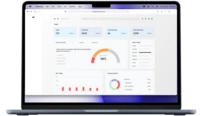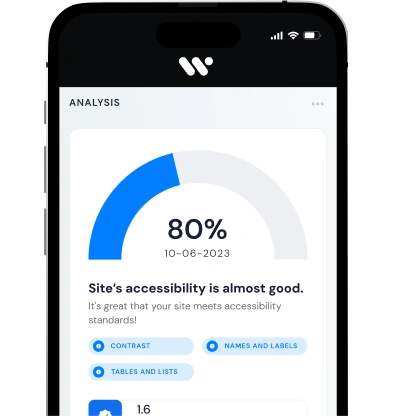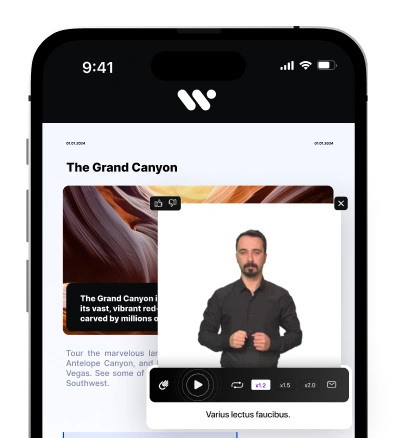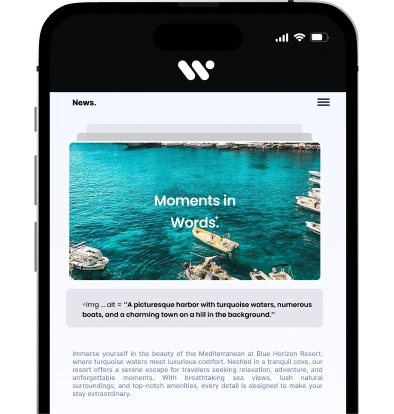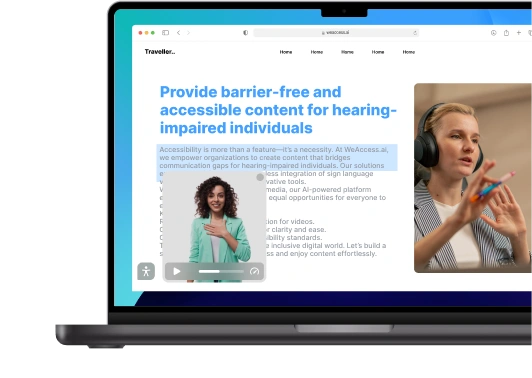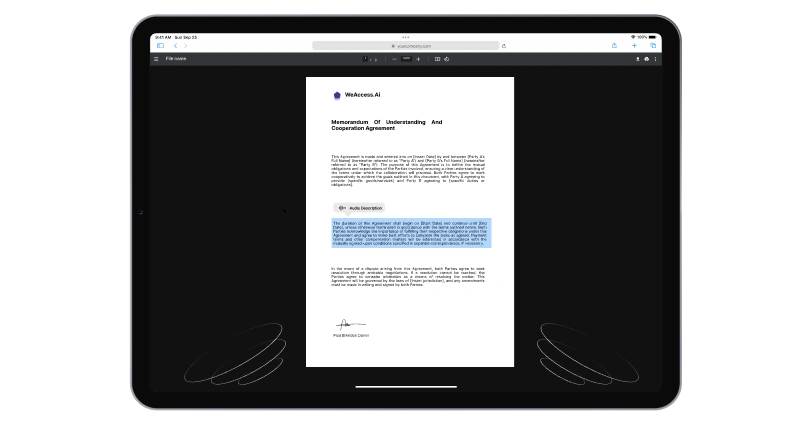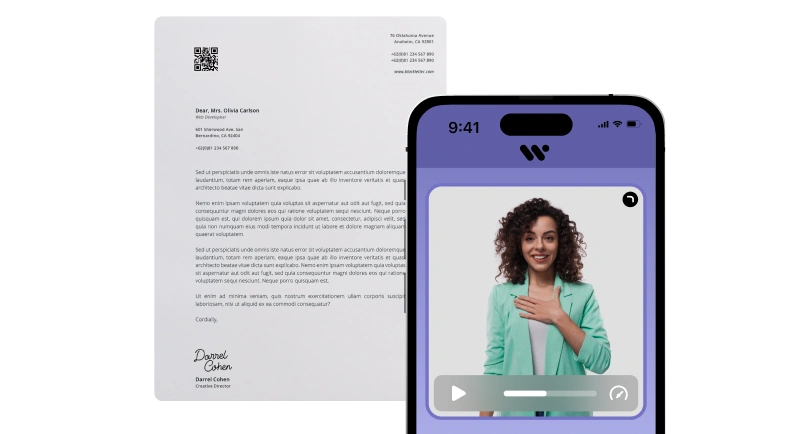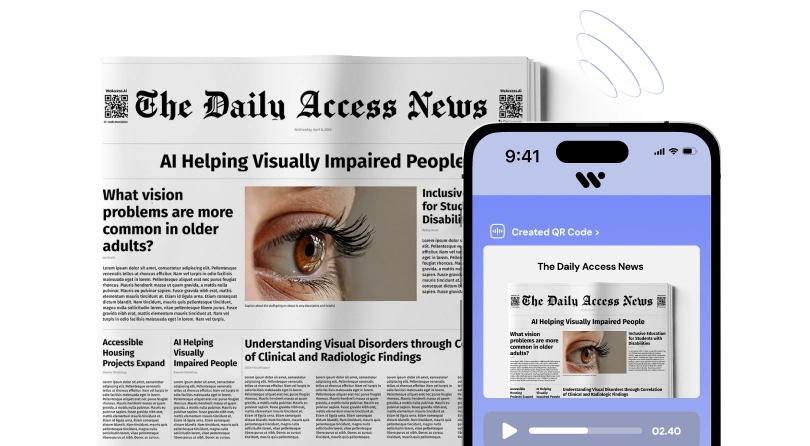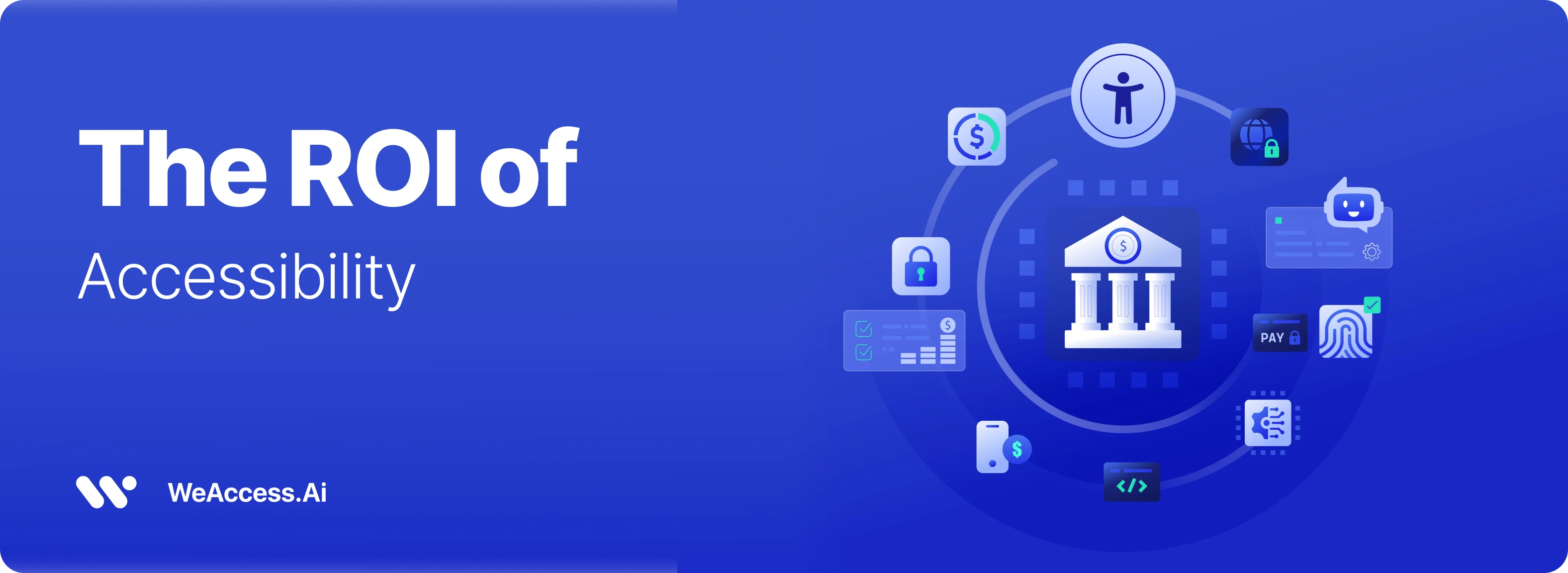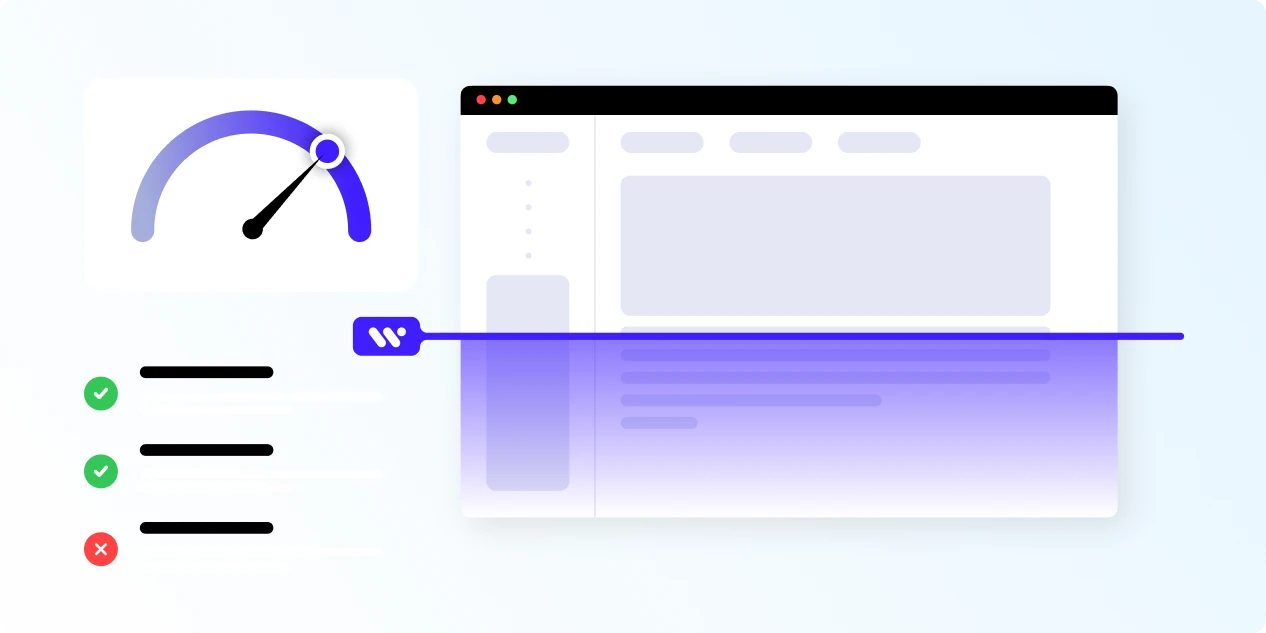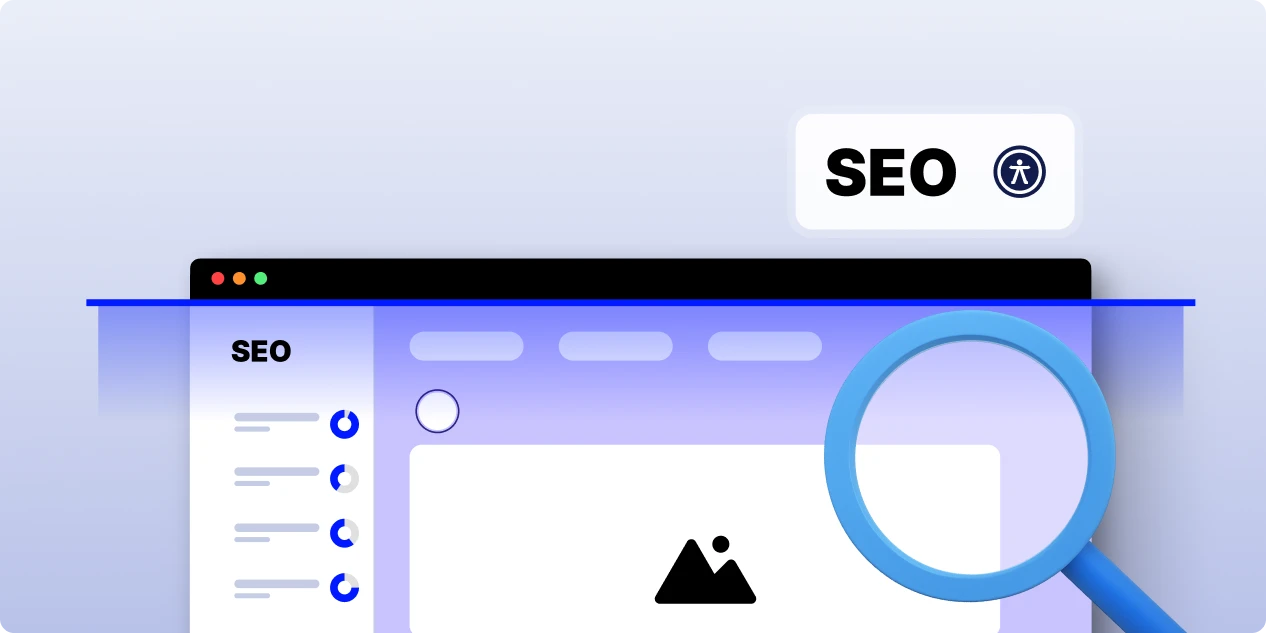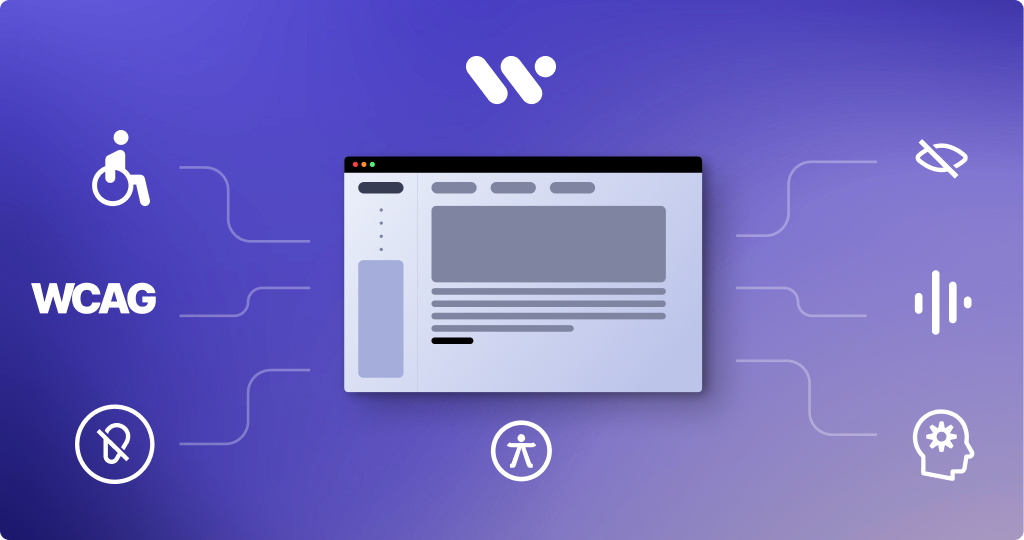Investing in digital accessibility offers tangible and intangible returns that extend far beyond mere compliance. Accessible websites foster inclusive engagement, enhancing user experience for all visitors. This commitment not only broadens market reach but also strengthens brand reputation, as consumers increasingly favor companies that prioritize inclusivity
Defining Accessibility and Its Scope
Digital accessibility ensures that all individuals, including those with disabilities, can perceive, understand, navigate, and interact with digital content effectively. This encompasses:
- Web accessibility: Designing and developing websites so that users with disabilities can perceive, understand, navigate, and interact with online content.
- Assistive technology: Tools such as screen readers, magnifiers, voice recognition, and alternative input devices that support access for people with disabilities.
- Inclusive design: A proactive approach to creating solutions that consider diverse user needs from the start.
- Usability and user experience (UX): Enhancing functionality and ease of use for all audiences, including those with temporary, situational, or permanent impairments.
Regulatory Frameworks for Accessibility
Web Content Accessibility Guidelines (WCAG)
The WCAG provides internationally recognized standards for web accessibility, ensuring websites and digital platforms are perceivable, operable, understandable, and robust for users with disabilities.
Americans with Disabilities Act (ADA)
The ADA Compliance is a U.S . law that prohibits discrimination against individuals with disabilities, requiring businesses to ensure digital accessibility as part of equal access.
Section 508 of the Rehabilitation Act
Section 508 mandates that all electronic and information technology used by federal agencies must be accessible, reinforcing inclusive design in public sector digital services.
Disability Discrimination Act (1995)
The Disability Discrimination Act (DDA), established in the UK, laid the foundation for preventing disability-based discrimination, including in digital environments.
Equality Act (2010)
The UK’s Equality Act consolidated anti-discrimination laws and expanded accessibility obligations, requiring organizations to provide equal access through usability and user experience (UX) best practices.
How to Measure the ROI of Digital Accessibility
- Conversion Rates: Measure how accessibility improvements drive higher customer actions, showing direct links to the ROI of accessibility.
- Engagement Rates: Track time on page, session depth, and return visits to evaluate the impact of web accessibility remediation.
- Bounce Rates: Assess whether accessibility updates reduce single-page exits, reflecting stronger usability.
- Cost Savings: Calculate reductions in support requests, complaints, and legal risks, highlighting the financial benefits of inclusive design.
- Operational Efficiencies: Monitor gains from improved workflows during product testing / product development, reducing troubleshooting time.
- Marketing & Sales Campaign Impact: Evaluate reach and customer response when accessibility is integrated into campaigns, strengthening brand reputation and loyalty.
The Direct Financial Returns: New Revenue and Growth
Tapping into a Massive Market
The global market of individuals with disabilities represents a significant and often underutilized consumer base. Key aspects include:
- Large Unaddressed Market Segment: Over 1 billion people worldwide live with some form of disability, accounting for approximately 15% of the global population.(src: https://thejembe.com/the-next-big-market-disabled-consumers/ )
- Growing Customer Base: In the United States alone, more than 61 million adults have a disability, constituting about 26% of the adult population.
- Market Reach: This demographic is not isolated; they are often accompanied by family and friends, expanding the potential customer base significantly.
- Spending Power of People with Disabilities: The combined global spending power of people with disabilities and their families is estimated to exceed $18 trillion annually (src: https://finance.yahoo.com/news/unlocking-value-disability-market-2024-100000841.html)
- Acquire New Customers: By enhancing accessibility, businesses can tap into this vast and growing market, attracting new customers who are often overlooked.
Improving Conversion Rates and User Engagement
Enhancing customer experiences through accessible design directly impacts conversion rates and user engagement. By creating digital platforms that are usable for people of all abilities, businesses ensure that content is accessible for people with disabilities, reducing frustration and abandonment. Inclusive and functional interfaces make navigation intuitive, encourage longer site visits, and increase the likelihood of completing desired actions. Ultimately, focusing on accessibility strengthens user experience, boosts engagement, and drives higher conversions while demonstrating social responsibility.
Boosting SEO and Organic Visibility
Implementing digital accessibility practices also enhances search engine optimization (SEO), improving organic visibility and traffic. Key strategies include:
- Semantic HTML – Using correct HTML elements to convey meaning helps search engines understand content structure.
- Semantic Markup – Properly labeling headings, lists, tables, and images ensures content is both accessible and indexable.
Cost Savings and Operational Efficiencies
Reducing Long-Term Development Costs
Incorporating accessibility from the start into your development process leads to significant cost & time savings over the product lifecycle. By building accessibility into your development process and following proactive product development practices, organizations reduce the need for expensive retrofits or remediating accessibility issues later. Early attention to code quality and accessible design not only minimizes long-term development costs but also streamlines updates, improves maintainability, and ensures products are usable for everyone from day one.
Decreasing Legal Risk and Compliance Costs
Prioritizing accessibility compliance helps organizations reach their compliance goals while minimizing legal risk. By adhering to web accessibility standards, businesses reduce exposure to web accessibility lawsuits and costly penalties associated with non-compliance. Integrating accessibility into design and development processes serves as proactive risk management, safeguarding the organization from potential lawsuits and ensuring that digital platforms remain legally compliant and inclusive for all users.
Streamlining Business Operations
Implementing digital accessibility enhances operational efficiency by simplifying workflows and reducing unnecessary complexity in digital systems. Accessible design minimizes errors, supports smoother interactions, and lowers operating expenses associated with managing inaccessible content or fixing usability issues. By integrating accessibility into everyday business operations, organizations can achieve more efficient processes, improve employee productivity, and deliver consistent, high-quality experiences to all users.
The Intangible (But Critical) Brand Benefits
Investing in accessibility delivers significant intangible benefits that strengthen a company’s brand and market position:
- Boost Brand Value – Demonstrating a commitment to accessibility signals social responsibility and inclusivity, enhancing overall brand perception.
- Marketing Differentiator – Accessible products and services serve as a unique selling point, setting businesses apart from competitors.
- Ethical Branding – Prioritizing accessibility reflects ethical values and reinforces trust among customers and stakeholders.
- Brand Loyalty – Inclusive design fosters deeper customer loyalty, as users feel valued and accommodated.
- Competitive Advantage – Companies that integrate accessibility gain an edge in attracting diverse audiences and building long-term relationships.
By focusing on these elements, accessibility becomes a driver of brand strength, customer satisfaction, and sustainable growth.
Beyond Permanent Disabilities: Expanding Your Reach Further
Accessibility benefits extend beyond users with permanent disabilities, encompassing those with temporary or situational impairments. Key considerations include:
- Situational or Temporary Impairments – People experiencing short-term challenges, such as a broken arm, noisy environments, or poor lighting, can navigate content more easily with accessible features.
- Accessibility Features – Tools like dark mode, voice-to-text, autocomplete, pinch-to-zoom, and voice assistants enhance usability for everyone.
- Mobile Accessibility – Ensuring content is optimized for mobile devices broadens reach, as users increasingly access services on smartphones and tablets.
- Inclusive Design for Everyone – By addressing diverse needs, businesses make digital platforms usable by all, increasing engagement and customer satisfaction.
Focusing on these aspects expands your audience, improves user experience, and reinforces your brand’s commitment to inclusivity.
Implementing Accessibility for a Strong ROI
Proactive Strategies for Building Accessibility In
Adopting proactive strategies ensures that digital accessibility is built into products from the ground up, maximizing ROI and reducing costly retrofits later.
Proactive Product Development
Integrate accessibility during design and development, focusing on clear page titles, structured headings, and robust code quality to deliver consistent and inclusive user experiences.
Building Accessibility into Content
Apply best practices such as using alt text / alternative text for images, ensuring link size is adequate for all users, and structuring content with proper landmarks and defined languages for screen readers.
Captions and Transcripts
Provide accurate captions for video content and transcripts for audio to support people with hearing impairments, enhancing overall usability and inclusivity.
Tools and Platforms
Leverage accessibility testing platforms like weaccess.ai to automate checks, refine compliance, and continuously improve digital products for all users with disabilities.
Implementing these strategies not only strengthens user experience (UX) but also expands market reach, fosters inclusivity, and drives measurable business value.
Conducting an Accessibility Audit
Performing a comprehensive accessibility audit is essential to identify gaps and prioritize improvements. Working with accessibility experts ensures that digital products meet established standards and guidelines. The audit evaluates websites, apps, and content to recommend effective accessibility solutions, helping organizations prioritize fixes that maximize both usability and ROI. Regular audits not only maintain compliance but also enhance user experience and expand reach to all users.
Making a Continuous Commitment
A sustained commitment to accessibility ensures that digital products and services remain inclusive over time. Companies that prioritize accessibility embed it into their culture, design processes, and updates, creating consistently improved digital experiences. By continuously evaluating and enhancing accessibility, organizations not only maintain compliance but also strengthen customer trust, loyalty, and overall satisfaction with their products or services
Industry Leaders Proving the ROI of Accessibility
Global brands such as Netflix, BBC, Ticketmaster, Microsoft, and Apple have all invested heavily in digital accessibility. Their efforts demonstrate that inclusive design is not only an ethical responsibility but also a proven driver of customer loyalty, growth, and market expansion.
Accessibility as a Competitive Differentiator
When companies like Apple and Microsoft prioritize accessibility, they set themselves apart as innovation leaders. By integrating accessibility into their core products, they have enhanced customer experiences for millions, proving that usability and inclusivity directly strengthen brand reputation.
Real-World Proof of Financial Returns
The financial impact is clear: Netflix invests in captions and audio descriptions to reach broader audiences, while Ticketmaster ensures accessible ticket purchasing for people with disabilities. These investments expand customer bases and reduce legal risks, illustrating how accessibility directly contributes to higher ROI.
Accessibility Driving Customer Trust and Loyalty
Brands such as the BBC show that consistent commitment to accessibility fosters trust. By making news and entertainment available to everyone, they not only meet compliance standards but also build long-term brand loyalty
Conclusion: Accessibility is a Smart Business Investment
Investing in inclusive accessibility is more than a legal or ethical obligation—it is a strategic business decision that drives growth, enhances user experience, and strengthens brand reputation. Leveraging tools like WeAccess and obtaining WeAccess certification demonstrates a company’s commitment to inclusivity, providing a competitive edge in a market that values accessibility. By prioritizing accessibility across all digital touchpoints, organizations unlock broader reach, higher engagement, and lasting customer loyalty, making it a smart and sustainable investment.

